―というお話。ヒ素は米に蓄積して―なんてので話題になるが、まあさしあたり問題になるほどではない。しかし―。
「Rice is a staple food for billions of people around the planet, but a new study suggests climate change may increase arsenic levels contained within the grain.
Rice is a staple food for more than half of the global population. It is consumed on a daily basis by more people than either wheat or maize, also known as corn.」
なにやら中国で28系統の稲の栽培試験をしたところ、二酸化炭素濃度の上昇とともにヒ素濃度があがる結果が出たとか。
BBC How climate change could affect arsenic in rice 18 April 2025
Amanda Ruggeri
場所を違えても同じような傾向がでたというわけでしょう。これで中国だけで1930万人のがん患者増加に寄与する数字だと概算されたそう。機序については―コメは水田でほかの雑草を排除しつつ作るが、この際、酸素が足りない状態で活動するバクテリアの働きで砒素が固定されがちになる。と、コメはこれを吸収してしまう。さて二酸化炭素がより大量にあると、このバクテリアの働きも活発になるのだそうで、結果としてコメの砒素吸収量があがってしまう―。
「But a new study of inorganic arsenic accumulation has found it may become a greater problem due to climate change. The researchers grew 28 different strains of paddy rice at four different locations in China in experimental conditions over a 10-year period.
They found that arsenic levels in the rice increased as carbon dioxide (CO2) levels in the atmosphere and temperatures rise. Then epidemiologists modelled how, at current rice consumption levels, these arsenic levels could affect people's health. They estimated that the corresponding increases in arsenic levels in rice could contribute approximately 19.3 million more cancer cases in China alone.」
研究の限界についてはこのように。
収入があがれば米への依存は減る。しかしこの研究の場合、コメ消費量は減らないものと見込んでいるという。また白米を食べ続けることを前提としているという(玄米より、そりゃあ砒素含有量は低いだろう)。その点の変化は考慮されていない。
「Of course, the study has limitations, aside from the metrics chosen for the 2050 scenario. For one, it assumed that people will continue to consume the same amount of rice per person in 2050 that they were eating in 2021, even though, as countries get wealthier, their rice consumption tends to drop. On the other hand, it also assumed that people would continue to eat far more white rice than brown rice, like they do now. Because of how it is processed, white rice contains less inorganic arsenic than brown rice – so a shift in the other direction could make numbers even worse.」
―気候変動も「最悪」パターンで考えているとか。
また、コメの砒素を気にすることについては、1. 微量でもどうも蓄積的な危険があると比較的近年、理解されたことと。2. ヨーロッパ諸国の水は比較的砒素を含まず、主要な砒素源としては米を挙げたいという食生活状況、を考えあわせるべきか。
―南米・南アジア・中央アジアの諸地域では地下水に含まれていて―ということで、それらの地域ではそもそも避けようがない。
「This means inorganic arsenic is particularly prevalent in the groundwater in a number of regions, including South America and parts of southern and central Asia. But people elsewhere are vulnerable too: in the US, for example, more than 7% of private well owners, or 2.1 million people, are drinking dangerous levels of inorganic arsenic. Worldwide, some 140 million people drink water with arsenic levels above the WHO-recommended guidelines.
And, outside of drinking water, the main source of dietary exposure to arsenic worldwide is rice. In regions that tend to have little arsenic in their groundwater, like Europe, rice is the single biggest source of dietary exposure to inorganic arsenic.」
どうしたもんかって、我々はあんまり気にしすぎず生きていくほかなかろうなあ、と。
米なしでは人口維持もできやしない―となれば、あれ? 人口が減れば米への依存も減るのかな?
まあ、いろんなシナリオがあり得るし―二酸化炭素増加も、必ずしも最悪シナリオで決定というわけでもあるまい。
「Rice is a staple food for billions of people around the planet, but a new study suggests climate change may increase arsenic levels contained within the grain.
Rice is a staple food for more than half of the global population. It is consumed on a daily basis by more people than either wheat or maize, also known as corn.」
なにやら中国で28系統の稲の栽培試験をしたところ、二酸化炭素濃度の上昇とともにヒ素濃度があがる結果が出たとか。
BBC How climate change could affect arsenic in rice 18 April 2025
Amanda Ruggeri
場所を違えても同じような傾向がでたというわけでしょう。これで中国だけで1930万人のがん患者増加に寄与する数字だと概算されたそう。機序については―コメは水田でほかの雑草を排除しつつ作るが、この際、酸素が足りない状態で活動するバクテリアの働きで砒素が固定されがちになる。と、コメはこれを吸収してしまう。さて二酸化炭素がより大量にあると、このバクテリアの働きも活発になるのだそうで、結果としてコメの砒素吸収量があがってしまう―。
「But a new study of inorganic arsenic accumulation has found it may become a greater problem due to climate change. The researchers grew 28 different strains of paddy rice at four different locations in China in experimental conditions over a 10-year period.
They found that arsenic levels in the rice increased as carbon dioxide (CO2) levels in the atmosphere and temperatures rise. Then epidemiologists modelled how, at current rice consumption levels, these arsenic levels could affect people's health. They estimated that the corresponding increases in arsenic levels in rice could contribute approximately 19.3 million more cancer cases in China alone.」
研究の限界についてはこのように。
収入があがれば米への依存は減る。しかしこの研究の場合、コメ消費量は減らないものと見込んでいるという。また白米を食べ続けることを前提としているという(玄米より、そりゃあ砒素含有量は低いだろう)。その点の変化は考慮されていない。
「Of course, the study has limitations, aside from the metrics chosen for the 2050 scenario. For one, it assumed that people will continue to consume the same amount of rice per person in 2050 that they were eating in 2021, even though, as countries get wealthier, their rice consumption tends to drop. On the other hand, it also assumed that people would continue to eat far more white rice than brown rice, like they do now. Because of how it is processed, white rice contains less inorganic arsenic than brown rice – so a shift in the other direction could make numbers even worse.」
―気候変動も「最悪」パターンで考えているとか。
また、コメの砒素を気にすることについては、1. 微量でもどうも蓄積的な危険があると比較的近年、理解されたことと。2. ヨーロッパ諸国の水は比較的砒素を含まず、主要な砒素源としては米を挙げたいという食生活状況、を考えあわせるべきか。
―南米・南アジア・中央アジアの諸地域では地下水に含まれていて―ということで、それらの地域ではそもそも避けようがない。
「This means inorganic arsenic is particularly prevalent in the groundwater in a number of regions, including South America and parts of southern and central Asia. But people elsewhere are vulnerable too: in the US, for example, more than 7% of private well owners, or 2.1 million people, are drinking dangerous levels of inorganic arsenic. Worldwide, some 140 million people drink water with arsenic levels above the WHO-recommended guidelines.
And, outside of drinking water, the main source of dietary exposure to arsenic worldwide is rice. In regions that tend to have little arsenic in their groundwater, like Europe, rice is the single biggest source of dietary exposure to inorganic arsenic.」
どうしたもんかって、我々はあんまり気にしすぎず生きていくほかなかろうなあ、と。
米なしでは人口維持もできやしない―となれば、あれ? 人口が減れば米への依存も減るのかな?
まあ、いろんなシナリオがあり得るし―二酸化炭素増加も、必ずしも最悪シナリオで決定というわけでもあるまい。










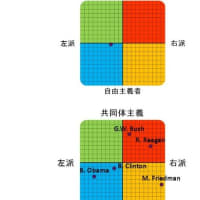
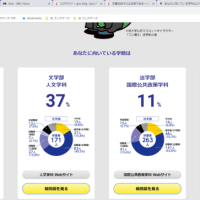



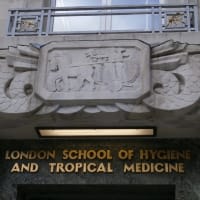


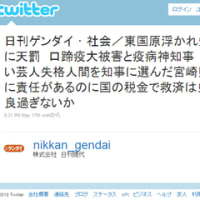
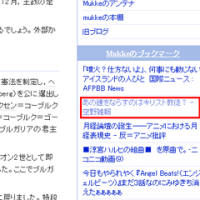





※コメント投稿者のブログIDはブログ作成者のみに通知されます